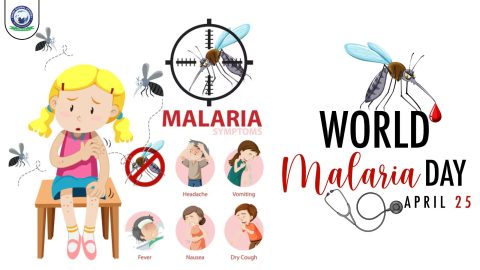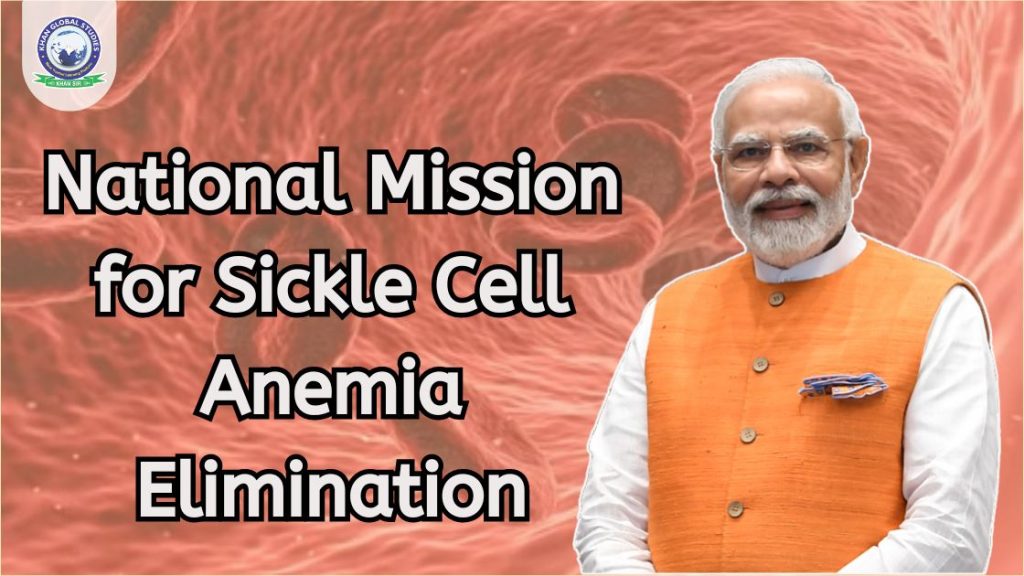Sickle Cell Disease (SCD) is a serious genetic condition that affects millions of people worldwide. Recognizing its burden, the Government of India launched the National Mission for Elimination of Sickle Cell Anemia in 2023. This ambitious initiative aims to significantly reduce the prevalence of SCD and improve the lives of patients.
About the National Mission
The mission focuses on high-risk populations, especially those living in tribal areas. It emphasizes early diagnosis, accessible treatment, and prevention strategies. The program leverages India’s existing healthcare infrastructure, the National Health Mission (NHM), for wider access.
Mission Objectives
- Affordable and accessible care: The mission strives to ensure that all SCD patients have access to quality medical care regardless of location or socio-economic background.
- Improved quality of care: By providing training and resources to healthcare professionals, the mission aims to enhance the quality of care provided to SCD patients.
- Prevalence reduction: Through comprehensive screening programmes, especially among newborns and young adults, the Mission aims to identify potential carriers and prevent future cases of SCD.
Controlling Sickle Cell Disease
The Mission adopts a multi-pronged approach to control SCD:
- Awareness Building: Community engagement is crucial. Educational campaigns inform individuals about SCD, its symptoms, and the importance of genetic counselling, especially before marriage and pregnancy.
- Early Diagnosis: Universal newborn screening and school-based programmes can lead to early detection of SCD, allowing for timely intervention and improved management.
- Genetic Counselling: Making genetic counselling services accessible enables couples to make informed decisions about family planning and reduce the risk of their children inheriting SCD.
- Treatment and Support: The Mission focuses on establishing strong healthcare infrastructure with trained personnel to effectively manage SCD. Patient support groups provide emotional and social support to people suffering from the disease.
Recognizing the Signs and Symptoms
Sickle Cell Anemia (SCD) is a genetic disorder that affects red blood cells. These cells take on a sickle-like shape, causing them to get stuck in small blood vessels, leading to several health problems. While the severity of symptoms can vary, familiarizing yourself with the common signs can help ensure timely diagnosis and management.
Here is a description of some of the major symptoms of sickle cell anemia:
- Anemia: Sickle cells have a shorter lifespan than healthy red blood cells. This leads to a shortage of red blood cells, leading to anemia. Symptoms of anemia include fatigue, weakness, shortness of breath, and pale skin.
- Pain crises: A major symptom of SCD, pain crises occur when sickle cells obstruct blood flow, causing excruciating pain in the bones, muscles, chest, or abdomen. Painful episodes can last for hours or even days.
- Growth delay: Children with SCD may experience stunted growth and delayed puberty due to inadequate oxygen and nutrient delivery to tissues.
- Frequent infections: SCD weakens the immune system, making a person more susceptible to infections, especially bacterial infections.
- Jaundice: The breakdown of damaged red blood cells releases a yellow pigment called bilirubin, causing the skin and whites of the eyes to appear yellow.
- Hand-foot syndrome: Painful swelling of the hands and feet, especially in infants and young children, is a common symptom of SCD.
It is important to note that not everyone with SCD has all of these symptoms, and the severity can vary considerably. Some individuals may have mild symptoms, while others experience frequent and debilitating complications.
Cause of Sickle Cell Anemia Disease
Sickle cell anemia (SCD) is a serious genetic blood disorder. Understanding its cause enables individuals and families to make informed decisions about their health.
The root of the problem: is abnormal hemoglobin, which is a protein found in red blood cells that carries oxygen throughout the body. In healthy individuals, hemoglobin has a smooth, round shape, allowing red blood cells to travel easily through blood vessels.
However, in SCD, mutations in the HBB gene alter the instructions for hemoglobin production. This results in the formation of an abnormal hemoglobin called Hemoglobin S. Hemoglobin S has a different structure, causing red blood cells to become rigid and sickle-shaped.
The domino effect of sickle cells
These sickle-shaped cells have several disadvantages:
- They get stuck: Unlike healthy, flexible red blood cells, sickle cells cannot easily move into narrow blood vessels. They get stuck in these vessels, blocking blood flow and oxygen supply to tissues.
- They break easily: Sickle cells are fragile and prone to rupture. This breakdown process releases bilirubin, a yellow pigment that causes jaundice. Additionally, broken cell fragments can further obstruct blood flow.
- They have a short lifespan: Sickle cells die prematurely, leading to a constant lack of healthy red blood cells, causing anemia — a major symptom of SCD.
Inheritance Pattern: Two copies for this condition
SCD is an autosomal recessive genetic disorder. This means that a person has to inherit one mutated HBB gene from each biological parent to develop the disease.
- Carrier vs. Symptomatic: If someone inherits only one mutated gene and one normal gene, he or she becomes a carrier but does not have SCD. Carriers usually have no symptoms.
- Importance of Genetic Testing: Understanding carrier status through genetic testing can help couples make informed decisions about family planning and potentially reduce the risk of passing SCD to their children.
Remember, SCD is not contagious. It is a condition caused by a specific genetic mutation passed from parents. Early diagnosis and proper management are important to live a healthy life with SCD.
How does the Indian Government tackle it?
The Indian government tackles sickle cell disease (SCD) through the National Mission for Elimination of Sickle Cell Anemia, which leverages the existing National Health Mission (NHM) infrastructure. Here is how the government works on it:
1. Infrastructure and funding
- Utilizing NHM: The mission relies on the NHM’s established network of health facilities across the country. This ensures wider access and leverages existing resources for screening, diagnosis, and treatment.
- Focus on high-risk areas: The program prioritizes tribal communities with a high prevalence of SCD. These areas receive dedicated funding and targeted interventions.
2. Multi-Tiered Approach
Early detection
- Newborn screening: All newborns are screened for SCD to identify cases early and prompt intervention.
- School screening programs: School-based programs target adolescents to detect and manage the disease before complications arise.
Better Care
- Training and Resources: The government invests in training healthcare personnel to enhance their skills in the diagnosis and management of SCDs.
- Standard Treatment Protocols: Establishing standardized treatment protocols ensures consistent and high-quality care across healthcare facilities.
3. Community Engagement and Prevention
- Awareness Campaigns: The government conducts educational campaigns to raise awareness about SCDs, their symptoms, and the importance of genetic counselling, especially before marriage and pregnancy.
- Genetic Counseling Services: Making these services accessible empowers individuals to understand their career status and make informed reproductive choices.
4. Collaboration and Partnerships
- Government Departments: The Ministry of Health and Welfare leads the mission, collaborating with the Ministry of Tribal Affairs for targeted interventions in tribal communities.
- Non-Governmental Organizations (NGOs): Partnering with NGOs leverages their expertise and strengthens community outreach programs.
- Private Sector: The government encourages corporate participation through Corporate Social Responsibility (CSR) initiatives that may support infrastructure development, research or patient support programmes.
By combining these strategies, the government aims to create a comprehensive system for managing SCD. This includes early identification, improved healthcare access and preventive measures to reduce future cases. The success of the mission depends on continuous monitoring, data collection and adaptation of strategies based on real-world results.
Way Forward
The National Mission to Eliminate Sickle Cell Anemia is a vital step towards a healthier future for millions of Indians. By prioritizing early diagnosis, accessible treatment, and community awareness, this initiative has the potential to substantially reduce the burden of SCD in the country. The success of the mission depends on strong collaboration between government agencies, healthcare professionals, and community organizations.




